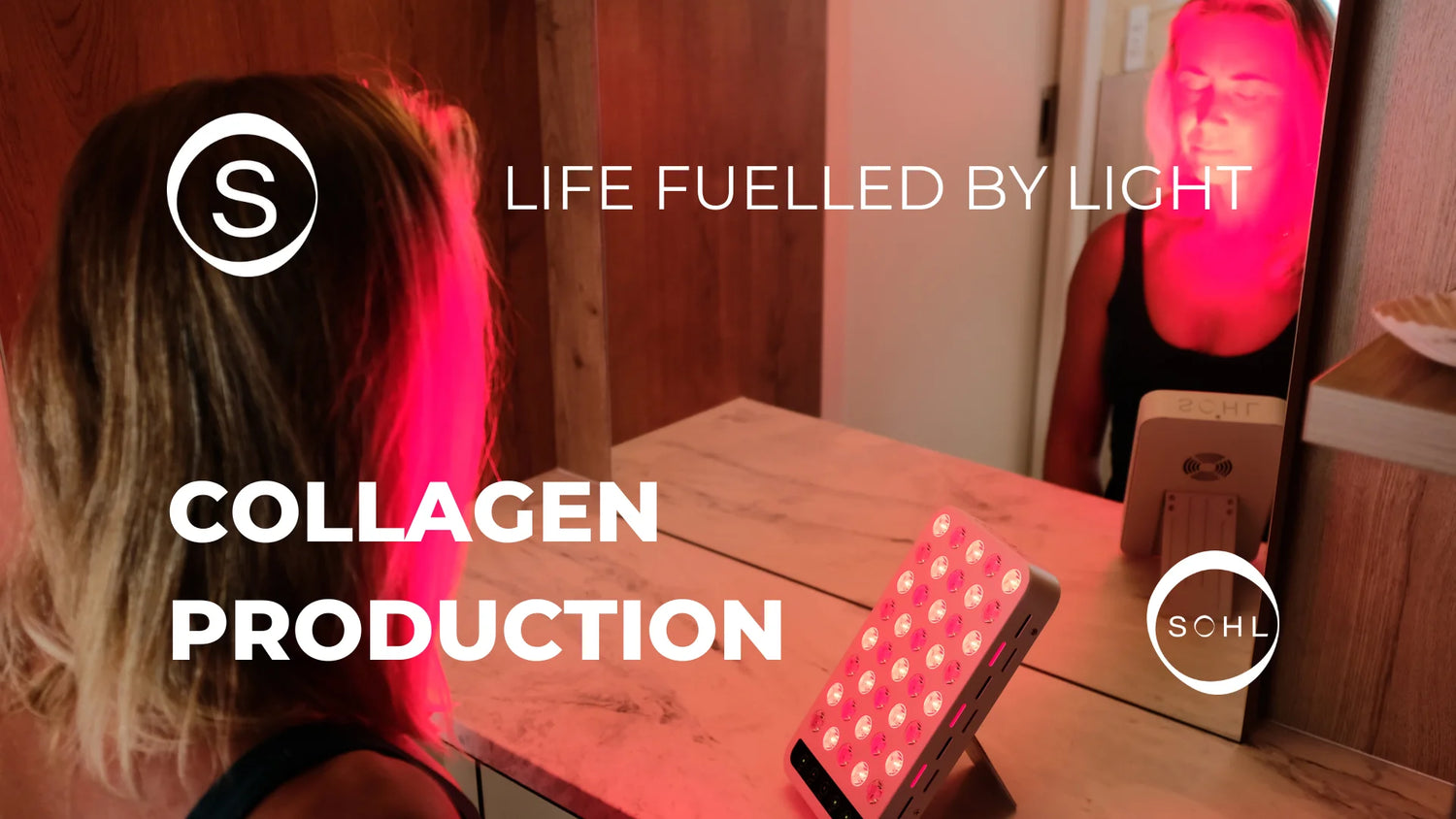Studies have demonstrated that different wavelengths of red and infrared can have distinctly different effects on cellular function. Red and near-infrared wavelengths used in red light therapy have been shown to stimulate cellular energy production via the mitochondria, while mid and far-infrared wavelengths used in infrared saunas primarily produce radiation to heat the body's tissues.
Infrared Sauna
Infrared saunas are enclosed structures or rooms that emit infrared radiation to heat the body directly. They typically use ceramic or carbon heaters to produce infrared rays, which penetrate the body and raise its core temperature. This leads to sweating and an increase in heart rate, mimicking the effects of traditional saunas which are heated by electric heaters or wood stoves.
Red and Near Infrared Light Therapy
Red and near-infrared light therapy involves the use of engineered panels & PODs that emit specific red and near-infrared wavelengths of light. These devices can be in the form of a wrap, handheld, targeted, or full-body panels/POD. They deliver light directly to the targeted area of the body for therapeutic purposes.
Wavelengths and Penetration
To understand the difference between the two, we first need to understand the red and infrared light spectrum. Red covers between 620-750nm, near-infrared covers 750-1400nm, mid covers 1400-3,000nm and far-infrared covers 3,000-10,000nm.
Infrared Sauna
Infrared saunas emit mid and far-infrared radiation which penetrates the skin to generate heat, leading to the warming effects experienced during sauna sessions.
Red and Near Infrared Light Therapy
Red and near-infrared light therapy devices emit specific red and near-infrared wavelengths of light. A wide range of studies have found particular wavelengths within this spectrum produce a bioactive effect on cells. The light stimulates the mitochondria in cells to produce more ATP (adenosine triphosphate), which is the primary energy source for cells. Red light penetrates superficially into the skin, benefiting the skin's surface layers, while near-infrared light can penetrate deeper, reaching muscles, tendons, and bones.
Benefits and Applications
Infrared Sauna
The heat generated by the sauna enhances blood circulation to the muscles, promoting the supply of oxygen and nutrients to cells while eliminating waste products that contribute to muscle soreness. This improved blood flow also aids in reducing inflammation, a frequent cause of post-exercise muscle soreness. Saunas can also facilitate relaxation and stress reduction by triggering the release of endorphins, the body's natural pain-relieving compounds. Endorphins contribute to a sense of relaxation, alleviating stress and anxiety, thereby promoting better sleep initiation and maintenance. When you sweat in a sauna, you lose fluid from your body, which can help to eliminate toxins through a few different mechanisms.
Red and Near Infrared Light Therapy
Red and infrared light therapy has a much broader range of applications working at a cellular level. Red and near-infrared light therapy is used for skin rejuvenation, increasing strength and endurance gains, post work out recovery, wound healing, reducing inflammation & pain, mental acuity, improving the appearance of skin conditions like acne and wrinkles, muscle recovery, joint pain relief, and cellular regeneration.
User Experience and Accessibility
Infrared Sauna
Infrared saunas provide a full-body experience where you can relax and unwind within an enclosed environment. They are commonly found in spas, some gyms, or as standalone units for home use. The sauna experience involves high temperatures and increased humidity, promoting sweating.
Prior to a sauna the device will need to have 20-30 minutes of heating time with a session generally lasting between 20-40 minutes. After a sauna some downtime is needed to allow the cooling process to take place as well as having a shower to remove the sweat generated during the session. Prices for quality infrared saunas in New Zealand and Australia generally sit between $4,000- $10,000.
Red and Near Infrared Light Therapy
Red and infrared light therapy devices come in various forms, including handheld devices, targeted panels, or full-body panels. They can provide targeted treatment or a relaxing whole body experience.
They are generally more targeted and can be used for specific areas of the body. Some devices are portable and suitable for home and away use, allowing you to target specific areas conveniently.
Red light therapy does not require any heating time and can be immediately exposed to bare skin. While you need to be ~25cm from the panel other activities can be done while having a session. Prices for quality red light therapy devices range from $400-$4000 depending on the size for targeted body panels and $5000- $12000 for full body panels.
Conclusion
Infrared saunas and red light therapy offer distinct benefits, catering to different needs and goals. They are both very valuable healing tools but one can not substitute the other. If you are deciding between the two it is important to consider your specific needs, desired outcomes, budget and functionality.





